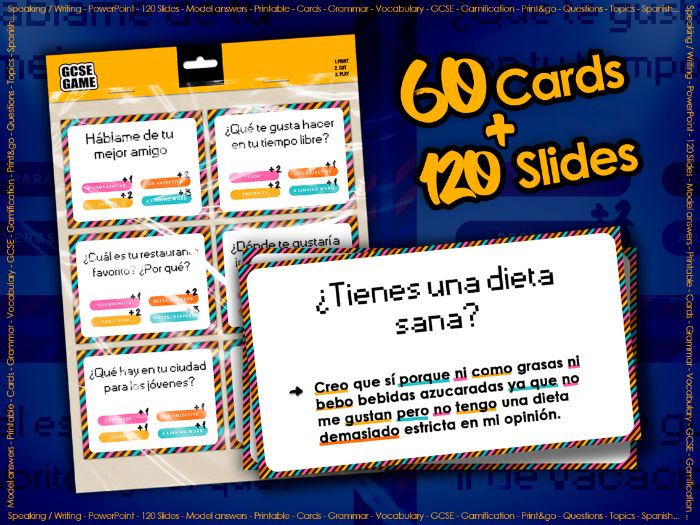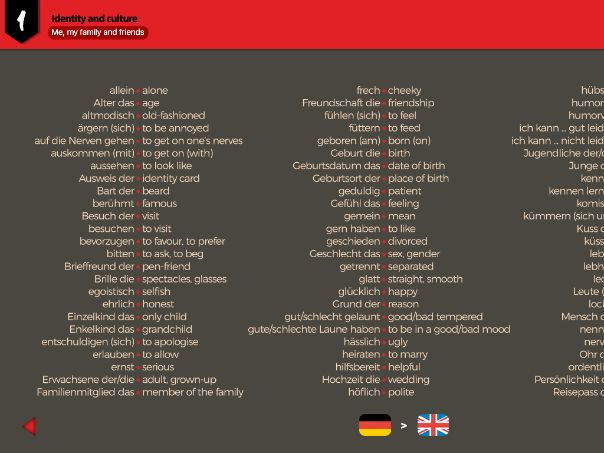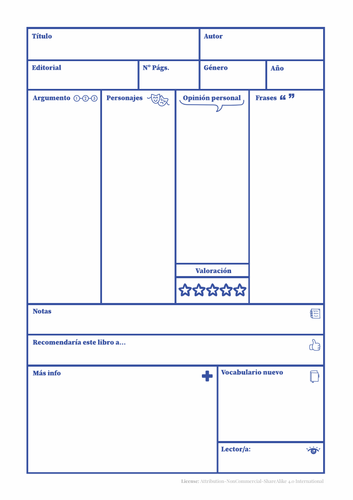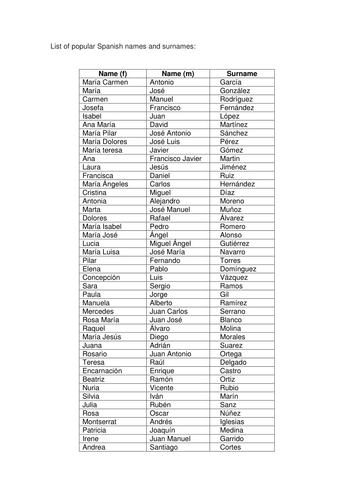
51Uploads
55k+Views
35k+Downloads

German GCSE - Vocabulary list (AQA New Specification 8668)
A PowerPoint with all the theme-based vocabulary included in AQA's new specification (8668). It has an interactive menu so you can jump to a specific level (foundation/higher) or different topics.
TOPICS:
1: Identity and culture
1: Me, my family and friends
2: Technology in everyday life
3: Free-time activities
4: Customs and festivals in German-speaking countries/communities
2: Local, national, international and global areas of interest
1: Home, town, neighbourhood and region
2: Social issues
3: Global issues
4: Travel and tourism
3: Current and future study and employment
1: My studies
2: Life at school/college
3: Education post-16
4: Jobs, career choices and ambitions
Source for the vocab list: http://filestore.aqa.org.uk/resources/german/specifications/AQA-8668-SP-2016.PDF

Book review - Printable (Spanish)
After looking for a while for a basic book review template I decided to create my own in order to get what I was specifically looking for. Maybe you find it useful too. Take a look.
The templates I found were somehow limited or aimed at really young students so I created this personal version. The document is a PDF form so students can fill it in directly on their computers.
You can use them in your lessons, the school library and bookclubs but also for your own book readings to keep track of all those things that stack with you.
Simple, schematic and FREE!!!

Tweetstakes: Spelling on Twitter (Spanish)
These last years I’ve been compiling a collection of linguistic mistakes I happened to read on Twitter. These tweets have been great real examples for my students. They found them fun and challenging. Here it is a small selection of the top 30 and different ways to exploit this freebie.
The presentation is pretty simple:
Students get a tweet and they try to find orthographic mistakes
Click and the mistake is highlighted to confirm or to show what is actually wrong with the text
The students then try to explain why is it wrong
Click again and a linguistic, detailed explanation will appear. You can then teach them the reason in a more detailed manner with the linguistic explanation and the example corrected.
More info: https://mflandbeyond.wordpress.com/category/freebies/

List of popular Spanish names and surnames
Sometimes while I am creating activities my brain is so exhausted that I can’t think of more than 5 proper names so that’s when I tend to have a variety of names by using this list that includes the top 100 popular Spanish names and Surnames. It really helped me so that’s why I decided to share it. I hope it helps!

Doodle slides - Free presentation template
I decided to digitalize these doodle slides I created and since they turned out to be pretty handy for me I thought that perhaps I should share them in case they are useful for someone else as well.
The slides include shapes such as notebooks, speech bubbles, arrows, folders, tags, signs...
I hope they help!

Y9 - Clothing - La Ropa 2 (Speaking)
3 speaking activities based on the topic of fashion and clothing. The instructions for each activity are included as notes on the PowerPoint (Menu>View>Notes).

A2- Understanding Maria full of grace
A simple page with lots of interesting facts about the film that will help the students to understand it a bit better. This will probably be the last resource I share so... hasta la vista baby!

Christmas activity
This is the latest Christmas activity I designed for a Spanish B2 lesson. It consists of an article about a gigantic nativity scene that has been built in Alicante not only as part of the Christmas decorations but also as a way to brake a record Guinness and as a touristic attraction.
It is a topic perfect for a debate since there are divided opinions about the money spent on this masterpiece. In such difficult time is it a good idea to spend so much money on it or is it a clever touristic strategy that will generate consumption in the area?
This is the way I proceed with the activity but this is just a guide so please feel free to use this resource in the best way it fits your students.
First, we read the article and then we work on the vocab they find trickier. There is only one tiny thing I do not explain or translate which is the expression of the headline since is part of activity one.
After they get the gist of this piece of news, we move on to activity one. The students look for the meaning of this expression on the Internet so they do a bit of independent learning. Here you will find more info on its meaning:
Armarse el belén: This expression is used to say that, in a certain situation, there is a mess, chaos, confusion… Source.
We can also add as teachers that this expression is not limited to the festive period and it can be commonly heard all year long.
Then, you can proceed with the rest of the questions either by doing some speaking or writing with them. The last ones are especially great to practice the conditional tense and you can even add some subjunctive forms if they feel brave enough.
Lastly, you can divide the class in groups and organise a debate on the pros and cons of the massive nativity figures. It could be a great opportunity to teach them some expression in order to express their arguments:
Me parece que…
¿Cómo es que…?
Si fuera tú…
Creo que sería Bueno que…
Tienes razón, pero…
No digo que no, pero…

GCSE Spanish Photo card Revision
I have created in this collage a photographic composition that covers all the main topics for the GCSE
SPANISH Speaking exam by AQA (8698).
You can use this not only the typical speaking exercise for the exam. A fun way to take this as a listening activity would be to give them their mini whiteboards. They are giving their backs to the image projected and only one student that can see the picture would describe to the others this crazy creation. The one that is able to reflect more details in their drawings wins.
All the main topics were covered and the student’s reaction was very positive.

GCSE - ¿Qué hay en la foto? (Speaking)
After spending endless hours compiling a collection of free to use and share photos I’ve created this presentation in order to help students with the Spanish speaking exam. I hope this presentation saves you up some precious time and is helpful for your students!
The PowerPoint includes an interactive menu so you can easily access the photos (48 speaking cards) and the vocabulary section (both foundation and higher).
In the photo cards, you will find a photo to be described + questions + a short alternative description of what’s in the photo and in the vocabulary section a list of the vocab needed for each level divided into the different topics. The themes included are those required for AQA’s Spanish GCSE (8698):
3.1.1 Theme 1: Identity and culture
Topic 1: Me, my family and friends
Topic 2: Technology in everyday life
Topic 3: Free-time activities
Topic 4: Customs and festivals in Spanish-speaking countries/communities
3.1.2 Theme 2: Local, national, international and global areas of interest
Topic 1: Home, town, neighbourhood and region
Topic 2: Social issues
Topic 3: Global issues
Topic 4: Travel and tourism
3.1.3 Theme 3: Current and future study and employment
Topic 1: My studies
Topic 2: Life at school/college
Topic 3: Education post-16
Topic 4: Jobs, career choices and ambitions
Last but not least, I would like to thank the people who share this sort of images free of charge and that therefore make possible that we can create valuable resources for our students and also the people who nicely takes a couple of seconds to rate and review the resources we share. THANKS A BUNCH!!!

A2 - Gap fill for every subtopic (Reading)
Because one never has enough gap fill exercises here you have a complete selection of slightly adapted articles (one piece of news for each subtopic) ready to be projected and printed for your students. You have also an interactive menu to take you directly to the piece of news of your choice and also a button on the texts (upper right margin) to take you back to the main menu.
Your feedback is highly appreciated it! Just pressing some stars will do :) . Thanks!!!
Examination board: AQA > Spanish (2695)













